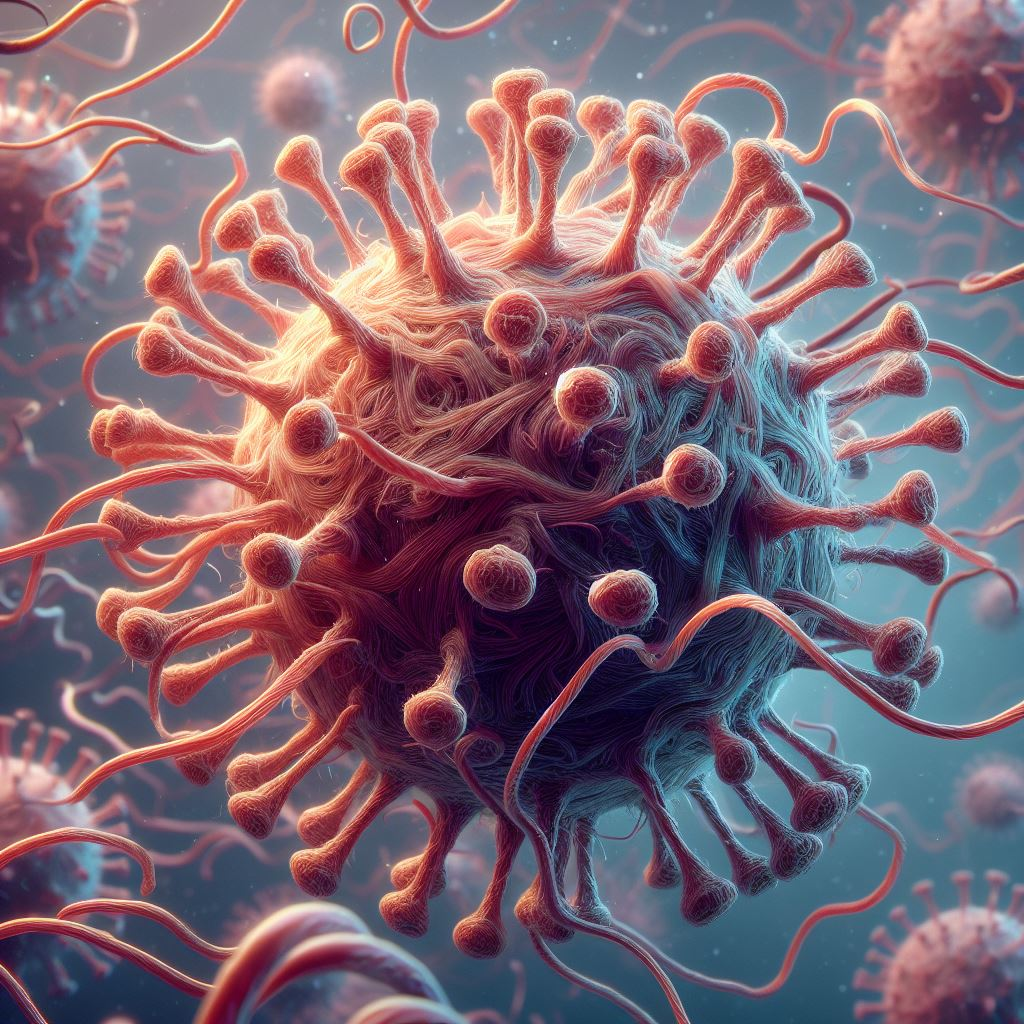Marburg virus infection can occur in humans after prolonged exposure to environments inhabited by African fruit bats, such as mines or caves.
Marburg virus disease (MVD) is an enveloped, non segmented, single-stranded, and negative-sense RNA virus of the filovirus family that causes a rare but severe hemorrhagic fever and affects both humans and non-human primates.
MVD is caused by the Marburg virus, a genetically unique zoonotic virus. The Marburg virus (MV), identified in 1967, has caused deadly epidemics worldwide. The mortality rate of Marburg virus disease varies depending on the outbreak and strain of the virus, but the average mortality rate is about 50%.
Filoviridae is a family of viruses and has the potential to cause outbreaks with high mortality rates. A member of the family Filoviridae and genus Marburg virus is a zoonotic virus that is initially transmitted from animals to humans.
Marburg virus and Ebola virus, both native to African fruit bats, serve as reservoirs for Marburg virus, transmitted through direct contact, sexual contact, or bites. Humans and nonhuman primates can become infected with the virus by eating virus-contaminated fruit or by direct contact with reservoir hosts.
Transmission:
Transmission occurs primarily through contact with the virus, such as through broken skin or mucous membranes through the eyes, nose, or mouth, or through blood or body fluids. Importantly, transmission occurs only when an infected person shows signs and symptoms, with an incubation period of 2 to 21 days. Disease transmission can also occur through direct contact between NHPs and humans or through the consumption of bushmeat from NHPs by humans.
Host of the MVD virus:
The natural host of Marburg virus is the Egyptian rousette bat, Rousettus aegyptiacus, a cave-dwelling bat that is widespread in Africa and animal reservoirs of Marburg virus.
Marburg virus infection can occur in humans after prolonged exposure to environments inhabited by African fruit bats, such as mines or caves. Close contact with an infected animal; contact with body fluids of an infected animal such as saliva, faeces, and urine; and through contaminated food products.
Pathogenesis:

Marburg virus enters the human body through mucous membranes and skin breaks, infecting various cell types. The Marburg virus replicates after entering infected host cells through attachment, endocytosis, and fusion.
Once the viral RNA genome of the Marburg virus is inside the infected host cell, it undergoes transcription and replication, after which it is released into the bloodstream, where the virus continues to multiply. The surface glycoprotein GP facilitates infection, leading to the virus spreading to lymph nodes, liver, spleen, and adrenal glands.
In this process, the disease is associated with fluid distribution problems, hypotension, and coagulation disorders, all of which contribute to the development of complete shock. This process results in lymphocyte apoptosis, hepatocellular necrosis, coagulation disorders, and multi-organ failure.
Epidemiology:
Epidemiology is the study of how diseases affect the health and illness of populations. Marburg virus disease (MVD) is a rare and severe disease caused by a filovirus that can cause outbreaks with high fatality rates.
According to the World Health Organization (WHO), the average MVD case fatality rate is around 50%, but it can vary from 24% to 88% depending on the virus strain and case management. Since then, sporadic cases and outbreaks have been reported in several African countries.
Health-care workers and family members are at high risk of infection if they do not use proper infection prevention and control measures. There is no licensed treatment or vaccine for MVD, but early supportive care with rehydration and symptomatic treatment can improve survival. Experimental therapies, such as blood products, immune therapies, and antiviral drugs, are under development and evaluation.
Signs and symptoms:
Symptoms of Marburg virus infection include fever, myalgia, chills, and malaise, often similar to other hemorrhagic fevers. The illness caused by the Marburg virus has a sudden onset with a high fever, severe headache, and severe malaise. Muscle aches and pains are a common feature. Severe watery diarrhoea, abdominal pain and cramping, nausea, and vomiting may begin on the third day. Diarrhoea can last up to a week.
Diagnosis:
BSL-4 practices and facilities are recommended for activities involving the propagation and manipulation of production quantities or concentrates of the Marburg virus. ABSL-4 practices and facilities are recommended for activities involving animals.
Tests employed for diagnosis;
- CBC
- ELISA
- Immunofluorescent assays
- RT-PCR
- Rapid diagnostic tests
Prevention measures:
Precautions include proper hand washing, avoiding contact with body fluids of infected individuals, vaccination, reducing wildlife-to-human transmission, safe burial practices, reducing the risk of sexual transmission, and avoiding pregnancy-related fluids.
Practice hand hygiene and respiratory hygiene, and use safe injection methods and safe and dignified burial practices. Monitor your health for 21 days after visiting an area where MVD is known or suspected, and seek medical attention immediately if you develop symptoms of MVD. Rapid diagnosis can significantly reduce the spread of infection, reduce attack rates, and ultimately save lives.
This article is jointly authored by Palwasha Chandni and Muhammad Hamza from the University of Veterinary and Animal Sciences Lahore, sub-campus Jhang.
